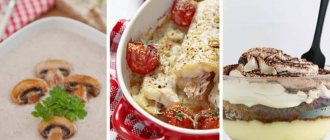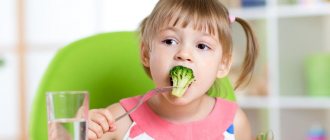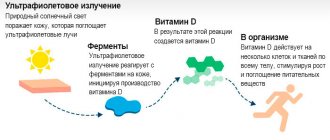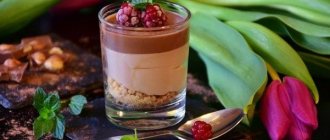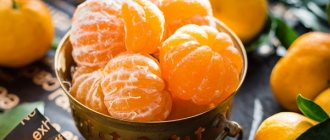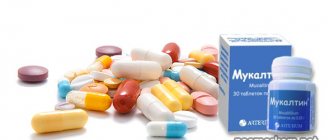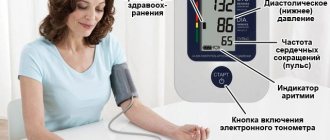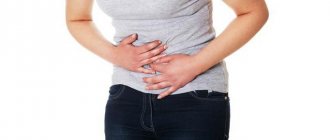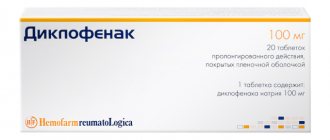Tuberculosis is an infectious disease caused by a microbe called Koch bacillus, which affects the lungs, as well as the intestines, bones and joints. The disease is transmitted by airborne droplets and is characterized by the formation of foci of inflammation in the affected tissues. Previously, outbreaks of tuberculosis progressed during periods of war and repression, but today this infectious disease affects more than 10.4 million people in the world from different social strata of the population. Koch's bacillus is resistant to many disinfectants and has the ability to survive for a long time in dried sputum, in soil, and on the surface of contaminated objects. In addition to the aerogenic method, it is possible to become infected with tuberculosis through food products and through contact with objects on the surface of which there is a Koch bacillus.
Purpose of diet No. 11 according to Pevzner
Patients with severe chronic diseases such as tuberculosis of the lungs, bones or other organs, after extensive surgical interventions or serious injuries, require comprehensive rehabilitation. This concept includes not only drug treatment, physiotherapeutic procedures, restorative exercise, daily routine, but also proper, carefully selected and balanced nutrition.
For this group of patients, a special diet number 11 has long been used, developed back in the days of the Soviet Union by the famous physiologist M.I. Pevzner.
What a person with tuberculosis should not eat
The diet for pulmonary tuberculosis during treatment and recovery is practically unlimited. Only a few products are prohibited, which include:
- fatty fish;
- fatty meats - pork, beef, lamb, as well as too fatty geese and ducks;
- smoked meats;
- semi-finished products. The ban is explained by the fact that these products may contain dyes and preservatives that have a negative effect on a weakened body.
You should not drink any alcoholic beverages, including beer, during or after illness. This may lead to an exacerbation of the disease.
The main properties of diet No. 11 according to Pevzner
This is a perfectly balanced high-calorie diet for weakened patients, which contains an increased amount of proteins, preferably dairy, as well as a variety of vitamins and minerals. The diet is designed to provide adequate nutrition while maintaining all body functions, aimed at speedy recovery, maintaining strength and maximizing the strengthening of the immune system.
This type of nutrition is prescribed for patients in the “cold” stage or in the process of recovering from an exacerbation of tuberculosis of the lungs, bones and joints, lymph nodes, as well as for those suffering from general exhaustion after serious surgical interventions, injuries, as well as infectious diseases with a protracted course.
Peculiarities
One of the main conditions for the name of this diet is the absence of problems with the gastrointestinal tract.
The diet is high in calories - the patient consumes about 3000–3500 kcal per day. Calorie intake increases due to increased consumption of protein and fortified foods; the amount of carbohydrates and fats also increases, but within moderate limits.
Additional minerals and vitamins are introduced into the diet, and the daily calcium intake is increased.
There are no special requirements for heat treatment of food, but you need to eat at least 5 times a day. It is recommended to drink as with a normal diet - at least 1.5 liters per day.
Description of treatment table 11 according to Pevzner
The energy value of the eleventh type of nutrition ranges from 3000 to 3400 kilocalories. The composition of the diet consists of the following components:
- Proteins - from 110 to 130 grams, with up to 60% of the total amount coming from animal proteins.
- Fats - from 100 to 120 grams, up to a quarter of the total amount - vegetable fats, high-quality vegetable oils.
- Carbohydrates - 400 - 450 grams.
The diet is well tolerated and has a beneficial effect on a weak, exhausted and exhausted body.
There are no restrictions on the method of culinary processing, that is, you can eat everything in moderation, except for foods and dishes included in the “forbidden” list.
Food should be divided into 5 meals, consumed moderately hot or at room temperature, in small portions. When creating a menu, you need to select harmoniously combined products and distribute the total daily calorie content between all meals.
Dishes that can be used to feed the sick
The following products are used to feed patients:
- Bread - wheat and rye, various varieties of flour mixtures. High-quality baked goods, rolls and sweet pastries, and various types of cookies are allowed.
- Soups made with meat, fish and vegetable broth, chicken broth, seasoned with a variety of cereals and vegetables.
- Meat - beef, veal, pork, lamb, goat in any form.
- Poultry, rabbits - prepared in any way.
- All kinds of fish, seafood. Cooking methods are not regulated.
- High-quality cereals and pasta of all types and existing varieties.
- Eggs - chicken, quail.
- Milk and fermented milk products with a preference for cottage cheese and cheeses.
- Butter - high-quality natural vegetable, butter and/or ghee.
- Vegetables, including legumes, in different forms and without fail - raw.
- Fruits and berries - processed and raw (required).
- Natural vegetable, fruit and berry juices, mousses, compotes.
- Rosehip decoction.
- Tea, coffee, cocoa and other drinks, if there are no restrictions from other diseases.
The absence of prohibitions on different types of culinary processing allows the patient to diversify the diet as much as possible. You just need to remember that in any situation this food is intended for an unhealthy person, so it is necessary to give preference to the most gentle preparation methods that preserve the maximum amount of vitamins and healing minerals in the food.
Food prohibited for use in diet No. 11 according to Pevzner
In this type of diet, the list of restrictions is quite small. It includes the following products:
- Meat, poultry and fish with excessive fat content.
- Solid cooking fats, spreads, margarine, palm oil.
- Sweets and baked goods containing too much heavy and rich cream.
- Ready-made and semi-finished products, sauces and preserves, fast food and freeze-dried, artificial products.
You should avoid ready-made, canned and processed foods, and any junk food.
Clinical picture
Tuberculosis is an infectious disease caused by gram-positive mycobacteria (Koch bacillus). These bacilli are extremely resistant to negative temperatures, acids, alcohols and alkalis. However, for successful reproduction, parasites require large volumes of oxygen and blood. For this reason, the infection often “settles” in the human respiratory tract, causing pulmonary tuberculosis.
In addition, invasion can affect the lymphatic system, joints, genitourinary organs, bones, brain, and skin. At the same time, in places where the stick settles, a persistent inflammatory process develops (due to the intensive reproduction of pathogens). Then, protective capsules are formed around the sites of parasite penetration, into which the body “seals” the suppressed bacteria.
With strong immunity and proper treatment, damaged tissues gradually scar. However, even proper therapy cannot provide a 100% guarantee of recovery, since some bacilli remain dormant in the body. As soon as favorable conditions are created for the activation of Koch's bacillus (decreased immunity, development of hypovitaminosis, increased toxic load on the liver), the protective capsule melts at the site of the old wound. At this moment, mycobacteria leave the granulomatous focus, and at the site of tissue scarring, a cavity is formed - a cavity (secondary tuberculosis).
As the infection progresses, local destruction of the upper and lower respiratory tract occurs. If there are a large number of cavities, hemoptysis or pulmonary hemorrhage occurs.
The first symptoms of tuberculosis:
- weakness;
- increased fatigue;
- pale skin;
- low-grade fever (37.2 degrees);
- sweating (especially at night);
- weight loss;
- swollen lymph nodes;
- insomnia;
- dry cough.
Sample menu for table day 11
The first morning meal is rice porridge with whole cow's milk, cheesecakes or cottage cheese soufflé with sour cream, green tea or black tea with lemon.
The second morning meal is an omelet of two whole eggs, coffee and toast with berry jam.
Lunch meal - noodle soup with chicken broth, pork chop with a side dish of stewed vegetables, a glass of apple juice.
Meals for the afternoon snack - soft-boiled eggs, a slice of black bread with peasant butter, a glass of cocoa with milk.
Evening meal - fish in foil, baked potatoes (can be in their skins or drizzled with olive oil), fresh vegetable salad, a glass of rosehip decoction.
Before going to bed, you can drink a glass of good kefir or natural drinking yogurt without additives. You can add 1 - 2 teaspoons of sugar, especially if all drinks during the day were taken unsweetened.
Example of a weekly diet menu No. 11 according to Pevzner
As a sample, you can use the following approximate menu for a week of use:
Monday
- An omelette of two eggs, a couple of veal sausages, orange juice or tea with lemon.
- Cow's milk tea, oatmeal cookies.
- Borscht with sour cream, chicken with mushrooms, fluffy rice, dried fruit soup.
- Cottage cheese, a glass of freshly squeezed juice.
- 5. Steamed cutlets, buckwheat porridge with butter, tomato juice.
Tuesday
- Oatmeal with dried fruits, tea.
- Cheesecakes with sour cream, apple or peach juice.
- Mixed meat hodgepodge, chicken pilaf, coffee with cream.
- Greek salad, compote.
- Salad with fresh vegetables, spaghetti with seafood, cranberry juice.
Wednesday
- Buckwheat porridge, vinaigrette, vegetable juice.
- Vermicelli casserole with fruit, tea with lemon.
- Vegetable soup with meat broth, fried fish, mashed potatoes, coffee with milk.
- Fruits, cookies, compote of lingonberries or other wild berries.
- 5. Cottage cheese with cream, a bun and chamomile tea.
Thursday
- Two soft-boiled eggs, a fresh tomato, a cup of black coffee.
- Cottage cheese casserole, peach or apricot juice.
- Green borscht with sour cream, buckwheat with meat and mushrooms, cucumber salad, green tea.
- Toast with jam and milk.
- Noodles with chicken, vegetables, kefir with honey.
Friday
- Omelet with champignons, crackers, coffee.
- Fresh fruit salad with cream, orange juice.
- Pea soup with croutons, mashed potatoes with meatballs in white sauce, pineapple compote.
- Fresh or canned fruits, cookies.
- 5. Potato casserole with sausages, lingonberry juice.
Saturday
- Rice porridge, tomato juice, bread with cheese.
- Biscuit and coffee with milk.
- Chicken broth soup with dumplings, steamed fish, boiled rice, tomato salad, vegetable juice.
- Cold sweet fruit soup, croutons, tea with milk.
- 5. Buckwheat porridge, chicken breast, salad, compote.
Sunday
- Fresh buns, scrambled eggs and bacon, tea with lemon.
- Cottage cheese with vegetables, a slice of black bread, a glass of milk.
- Soup with rice and meatballs, noodles with cheese, sauerkraut salad, tea with lemon.
- Assorted salad of fresh or canned fruits.
- Spaghetti with mushroom sauce, cheese, vegetable juice.
The menu for seven days is extremely approximate, designed so that dishes can be replaced, days can be rearranged and other cooking methods can be used. An important condition is the quality of the starting products and the correct cooking technology, which will maximize the usefulness of the prepared food. A minimum of heat treatment is a condition for preserving vital vitamins and minerals.
Recipes for some dishes of table No. 11
Beauty and health salad
Required:
- Fat peasant cottage cheese - 150 grams.
- Sour cream or market cream - 2 tablespoons.
- Fresh cucumbers - 2 pieces.
- Fresh tomatoes - 2 pieces.
- Green onions, parsley, dill - to taste.
- Sea salt - a pinch.
Preparation:
Rinse vegetables and herbs thoroughly, cut cucumbers into slices, tomatoes into slices. Chop the greens. Mix vegetables, herbs and cottage cheese, season with cream or sour cream, lightly salt. Serve as a separate dish or as an addition or appetizer. Great for breakfast or dinner.
Simplified Guryev porridge
This recipe uses an old recipe very loosely, but it turns out very tasty.
Required:
- Sweet milk rice porridge.
- Heavy cream.
- Baked apples.
- Jam to taste (seedless).
- Finely ground nuts.
Preparation:
The finished rice porridge is laid out in layers in a greased form, the pulp of baked apples, jam, cream are placed on each layer, and sprinkled with nuts. The mold should have at least 3 layers. The finished porridge is placed in the refrigerator, then cut into portions. Each of them is poured with cream mixed with sugar or a spoonful of honey.
There are a lot of recipes for delicious dishes that can be used to feed patients with tuberculosis or other serious chronic diseases. It is only important to take into account the possible presence of other diseases that impose restrictions on the use of certain food products. Now you know exactly when table 11 according to Pevzner is used and how to eat for tuberculosis.
Products prohibited for tuberculosis
There are few products that are harmful to patients with tuberculosis. But their use can neutralize the benefits of dietary nutrition provided for in table 11. You cannot eat lamb and pork fat; it is better to refuse this type of meat dishes.
Fatty poultry is prohibited - duck, goose. It is not recommended to eat a lot of fatty fish. You need to avoid hot sauces and seasonings. Alcohol is strictly prohibited.
